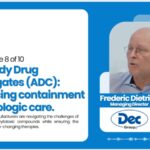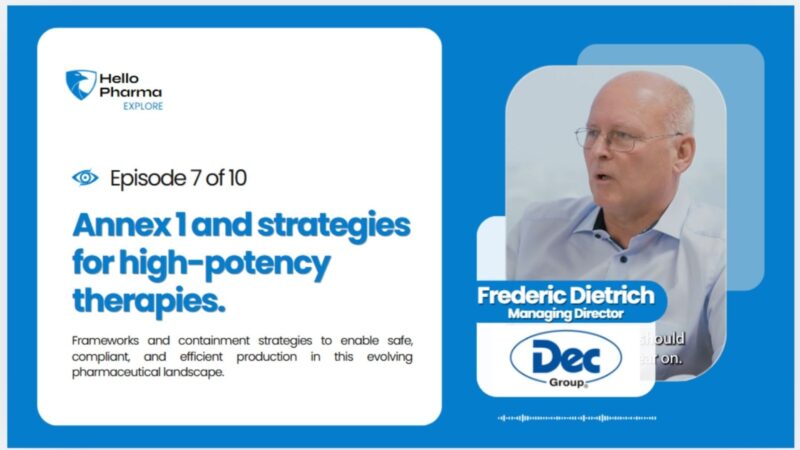With the recent updates to Annex 1 of the EU GMP guidelines, pharmaceutical manufacturers face new expectations around contamination control and sterile manufacturing practices. In Episode 7, we explore how these regulatory changes intersect with the production of high-potency therapies and what strategies can support compliance while maintaining operational efficiency.
Joining us again is Mr Frederic Dietrich, Managing Director of Dec Group, who shares his perspective on how Annex 1 is driving a new level of rigor in contamination control. The episode begins with an overview of the core updates to Annex 1, including enhanced requirements for risk-based contamination control strategies, process monitoring, and facility design. These changes reflect the growing complexity of modern pharmaceutical products and the need for robust control over every stage of production.
For manufacturers of high-potency active pharmaceutical ingredients (HPAPIs) and complex therapies, these updates present both challenges and opportunities. Mr Dietrich explains how advanced containment systems and integrated process solutions are helping companies align with the updated Annex 1 requirements. Containment technologies like isolators, closed transfer systems, and downflow booths create physical barriers that support the principles of contamination control by limiting operator interaction and environmental exposure.
Beyond containment, the episode discusses how modular facility design and flexible process integration can help manufacturers meet the evolving Annex 1 guidelines. Modular systems enable manufacturers to implement or upgrade containment solutions in a phased and scalable way, reducing downtime and maintaining compliance without major facility overhauls. Mr Dietrich shares examples of how modular design also facilitates easier cleaning, validation, and process optimization.
A critical element in the updated Annex 1 is the emphasis on continuous monitoring and data-driven risk assessment. Mr Dietrich highlights how integrating process analytical technology (PAT) and real-time data monitoring can support a proactive approach to contamination control. This data-driven strategy aligns well with the principles of Annex 1, offering manufacturers the tools to identify potential risks early and implement corrective actions swiftly.
The episode also considers how the broader shift towards high-potency therapies is influencing manufacturing strategies. With increasing demand for therapies that require very low doses and strict control over exposure, manufacturers must invest in systems that provide both high containment performance and process adaptability. Mr Dietrich explains how advanced engineering and digital integration support these dual goals, enabling manufacturers to remain compliant while maintaining the flexibility needed to bring innovative therapies to market.
Looking ahead, the interplay between regulatory expectations and technical innovation will continue to shape the landscape of high-potency manufacturing. Annex 1 is not just a compliance requirement; it is a catalyst for elevating standards in sterile manufacturing, driving companies to adopt technologies that safeguard operators, products, and patients alike.
Join us in this episode as we explore how Annex 1 and high-potency manufacturing are reshaping the way pharmaceutical companies approach safety, quality, and compliance.
For more in-depth resources and insights on pharmaceutical manufacturing technologies, visit www.hello-pharma.com.






